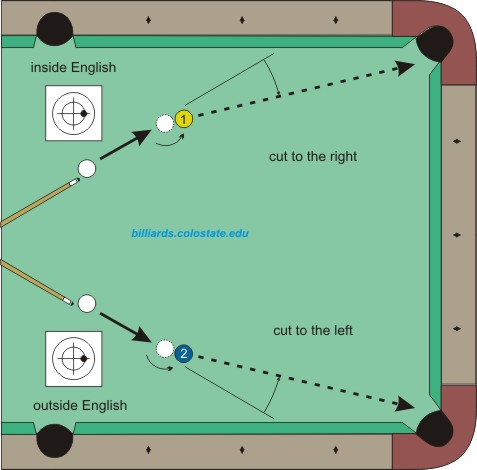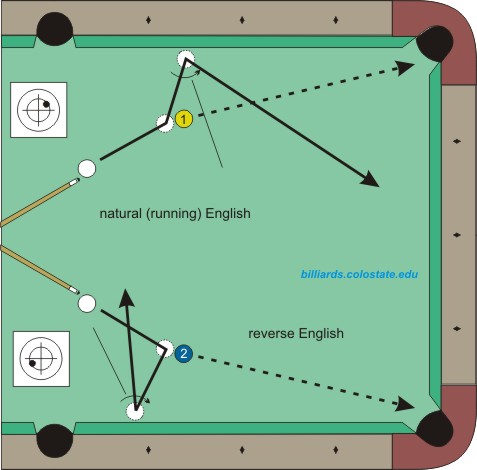Another newbie question:
Please define "running english" in the context of using it on kick shots. It's one of those terms that people use all the time, but us beginners aren't exactly sure what it means.
For no particular reason, I assumed it was high-right english (when kicking as per the diagram below). But then I realized that maybe it's high-center, or center-right, or ???
Thanks.

Please define "running english" in the context of using it on kick shots. It's one of those terms that people use all the time, but us beginners aren't exactly sure what it means.
For no particular reason, I assumed it was high-right english (when kicking as per the diagram below). But then I realized that maybe it's high-center, or center-right, or ???
Thanks.



